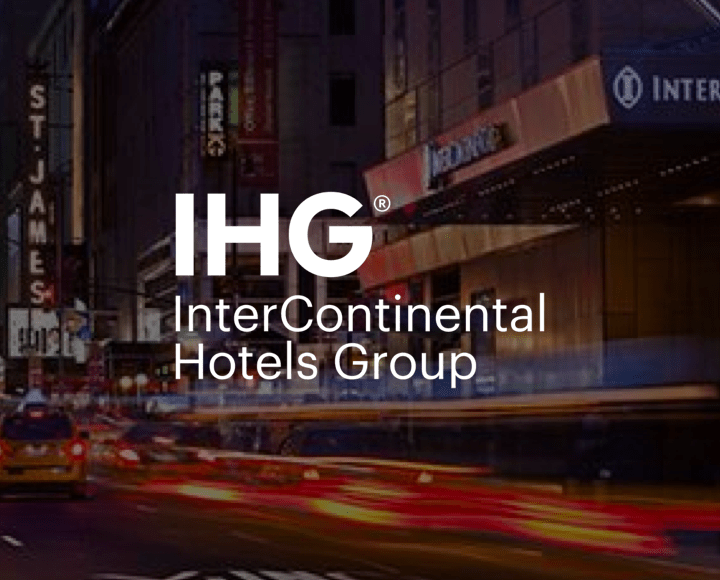Objectives
Successfully and efficiently merge two banks without losing customers and key staff and without damaging morale.
Westpac Bank is one of Australia’s “Big Four” banks, with locations and presence throughout the country. Challenge Bank was a regional bank serving Western Australia. When Westpac acquired Challenge, both organizations knew that a rocky road could very well be in front of them. Historically, mergers and acquisitions (M&A) in the Australian financial sector had been accompanied by significant loss of staff and a failure to attract new—and in some cases retain existing—customers.
The leadership at Westpac Bank and Challenge Bank were also aware of the research showing that activities such as M&As, restructuring and new ventures often fail to achieve their intended benefits. In far too many cases, these initiatives diminish the intellectual capital of the business because they are accompanied by:
- Workforce reductions, and along with them, a considerable decrease in internal organizational knowledge
- A related drop in motivation and willingness to contribute by those left behind
- An over-reliance on external expertise
- A significant under-valuing of the ideas and knowledge of the people of the organization
These banks were determined to buck this trend and have a smooth M&A process, one that would value, apply and retain the intellectual capital of both entities and result in a successfully merged bank, in the eyes of its customers as well as its employees.
Challenge
Reducing staff and closing branches while creating a unified, engaged and committed single organization.
Merging these two banks into a seamless whole would present several challenges, as the merger would necessitate:
- 900 fewer employees
- Closure of 40 branches
- Creation of one community from a national bank of 38,000 people and a regional bank of 640 people
“I can personally testify to the experience and challenges of going through a major restructure,” says Robert Webber, one of three external consultants engaged to support the “people” side of the merger.
Major restructurings often entail establishing project teams to review which roles (and people) should stay and which should go. In the language of the Herrmann Whole Brain® Model, Webber explains, the experience can typically play out as follows:
Those with more A-quadrant (Blue) thinking preferences may believe the restructuring is a good idea because it can save money, but they may be concerned about the accuracy (veracity) of the economic analysis.

Those with more B-quadrant (Green) thinking preferences may believe it will make the organization more efficient, but they may also worry that the confusion and process changeover will create chaos and inefficiencies in the short term.
Those with more C-quadrant (Red) thinking preferences may be troubled about a potential loss of livelihoods, but they can also think positively about how the new merged culture might provide new growth opportunities and benefits for associates.
Those with more D-quadrant (Yellow) thinking preferences may be excited about the possibilities the new entity will provide, but they may worry about the how well the vision of the future of the organization has been thought through.
While all of these perspectives should be taken into account as the major decisions are being made, without the tools to work together and value the thinking of all four quadrants of the Whole Brain® Model, there is no shared purpose and common ground. Instead, there is stress, conflict, insular decision making and, ultimately, less-than-optimum outcomes.
Solutions
A Whole Brain® approach to managing the merger, bringing in all perspectives to create a more comprehensive process and get greater commitment from across the two organizations.
“With Whole Brain® Thinking, we could take a more holistic approach to the strategic initiatives and the planning to ensure better outcomes. This allowed us to consider new options for bringing the organizations together.” – Robert Webber
With the cautionary tales of so many unsuccessful mergers in their minds, the banks recognized that a better approach to change had to be found. They realized that integrating the Whole Brain® Model and Whole Brain® Thinking at the organizational level would provide a more holistic way of looking at strategic initiatives and planning.
“With Whole Brain® Thinking, we could take a more holistic approach to the strategic initiatives and the planning to ensure better outcomes,” Webber says. “This allowed us to consider new options for bringing the organizations together.”
Taking a Whole Brain® Approach
Analysis: The business analysis had determined that 900 fewer employees would be needed post-merger, and that 40 branches should be closed. A Whole Brain® project team was assembled to ensure the appropriate decisions would be made and that a strong culture and community would emerge from the process.
Based on the results of their individual Herrmann Brain Dominance Instrument® (HBDI®) assessment profiles, it was discovered that the executive team members, all of whom had had successful track records operating financial institutions, primarily had thinking preferences in the A and B quadrants. A team with this profile would be conservative and risk adverse, and would also provide sound leadership for ensuring that business imperatives were looked after and systems were effectively integrated.
To complement the thinking styles of the executives, a “Merger Management Team” (MMT) was established. This team had an entirely different profile, with stronger preferences in the C and D quadrants.
The MMT required training in the business aspects of the merger, but their preferences for conceptual, “big picture” thinking allowed them to enthusiastically embrace the challenge of developing an innovative approach to the merger. They were also very committed to preserving the jobs of their colleagues and fostering a strong sense of organizational community.
ANALYZE–Cultural Audits: According to Webber, “We decided that we needed to know more about each organization so that the executive team and the MMT could focus on what mattered to the people.” In addition to the Whole Brain® Model, a number of instruments and processes were used, including:
- The Leadership Practices Inventory (LPI), developed by Kouzes and Posner
- The What Does It Mean to Work Here Inventory (WDIMTWH), developed by Webber. This identifies the gap between how it “is” and how people would think it “should be” in areas such as communication, teamwork, service and management.
- Focus groups
This process revealed areas of profound differences as well as areas of common ground among the employees, including:
- Very strong commitment to the customer
- Shared sense of being a Western Australian and a member of that community
- Desire to keep their jobs
- A desire to remain close to home (did not want to be forced to go to an inconvenient location/a long way away from home) Armed with this information, the teams could begin to plan their approach.
STRATEGIZE—Envision the Future: The team conducted a modified Future Search Conference that brought 150 staff from both banks together. This Whole Brain® exercise included:
- Asking people what made them “sad, mad, and glad” about the merger plan. It is essential to address the emotions of people.
- Celebrating the past of both organizations.
- Asking, What would we like the future to look like?
- Mind-mapping the business trends, issues and opportunities that the organizations were facing.• Establishing priorities for action.
- Forming project teams to come up with a plan to achieve the preferred future.
“Although there was a wide disparity in the size of the two organizations, we had equal representation from both banks and a cross-section of roles,” Webber says. “The Future Search Conference enabled us to tap into the intellectual capital or wisdom of the group.”
ENGAGE–Engage People: The merger was not going to succeed without the commitment of the people. This was, on the surface, a difficult task as most anticipated that the merger would be accompanied by a great deal of uncertainty about the future. Adding to the sense of fear was their prior knowledge of mergers, acquisitions and restructures in the banking sector, most of which had been accompanied by substantial job losses.
The MMT designed a multi-faceted approach to engaging the support of the staff of the two banks. This included:
- Conducting a communication audit and developing a communication strategy. The team learned what people wanted to hear, from whom they wanted to hear it, and how they wanted to hear it. The audit confirmed that the most trusted source of information was the immediate supervisor, so they became the cornerstone of the communication strategy.
- Telling the whole story. There were no secrets. Even bad news was shared openly and honestly. Wherever possible people were told the news face to face
- Seeking out ideas and letting the people contribute to the merger’s success. The team asked the employees for their input and solutions on how to make the merger work.
- Making commitments to staff. The staff received the reassurance that there would be no forced retrenchments or relocations.
IMPLEMENT–Make it Happen: After the Future Search Conference, project teams were established to manage the implementation of agreed-upon plans. Operational plans were developed for all aspects of the integration.
- There were two key principles essential to “making it happen,” according to Webber:
- The people were asked how to make this work.
Decisions were made at the right place. For example, the managers of co-located branches, one of which would have been closed as a result of the merger, were asked to decide who would be the manager. (Each person’s entitlements were guaranteed.) Only in the event that a decision could not be made would the head office intervene.
Results
Increased opening hours, no retrenchments or forced transfers, a reduction in turnover and the savings of $10 million that had originally been set aside for redundancie.
Applying the full brainpower and collective wisdom of the people created a positive set of outcomes that are in stark contrast to the typical M&A war stories. The process led to dramatic results across all areas, including:
- Successful merger of the two banks
- 40 co-located branches closed
- No retrenchments – no one paid to go
- No forced transfers
- 86% support for industrial relations agreement—an unprecedented result in Australia, even without the consideration of the merger
- Staff turnover reduced from 14% to 6%. This meant that the management of the integration took much longer as natural attrition was the strategy for avoiding forced retrenchment.
- Opening hours increased. The staff agreed that, to make the merger successful, and in some consideration of the commitment to retain jobs, they would open key branches for trading on a Saturday. This was a first in Australia.
- The $AUD10 million that had been set aside for redundancies was returned to Westpac.
UNLEASH THINKING POTENTIAL
Herrmann International combines powerful psychometric tools with learning programs to prepare your workforce for a complex and volatile environment. Learn more about our assessment tools, explore our learning programs, or talk to a Whole Brain® Specialist today.









